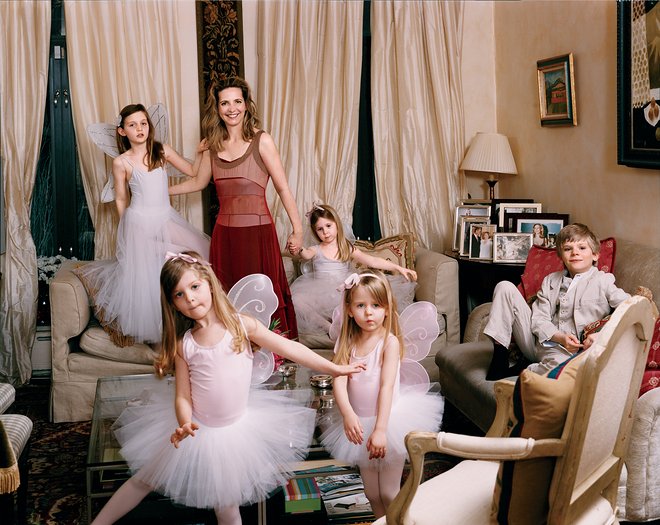Vogue: Netflix’s Docuseries The Ascent of Woman Puts Women’s Rights in a Powerful New Context

Amanda Foreman with her children, (from left) Helena, Xanthe, Halcyon, Hero, and Theo, at their home in New York, 2011.
Photographed by Tina Barney, Vogue, June 2011
By Eve MacSweeney
Vogue contributor and professional historian Amanda Foreman has spent much of her 25-year career taking deep dives into very specific subjects. She wrote the celebrated biography Georgiana, Duchess of Devonshire—which later became a movie starring Keira Knightley—and A World On Fire, an exploration of Britain’s role in the American Civil War.
So it’s something of a surprise that her latest topic is infinitely broader: 10 thousand years of global history, to be precise. Her series, The Ascent of Woman, produced by the BBC and launching on Netflix today, conveniently collects for us an overview of women’s societal roles throughout history that will refine many an argument in the classroom, the courtroom, and at the dinner table.
It’s amazing what we don’t know, and what we think we know, when it comes to understanding the evolution of women’s liberation. Who invented the veil? When did patriarchy come into being? Who produced the first literature? When did the notion of “the second sex’” take hold? The answers—revealed in the show—may surprise you. “If you don’t know it,” says Foreman, “others will make up that history for you.”
For instance . . . spoiler alert: The first civilization ever discovered in what is now Cappadocia, Turkey, in 8000 B.C., was completely egalitarian in terms of both gender and class, shown by the equal wear and tear on skeletons, indications of a uniform diet and burial rites, and the lack of any “big house” denoting status differences in the community. Understanding this, says Foreman, puts all arguments for greater justice and rights for women into a powerful context. “There’s a huge difference between demanding something that has never happened before and demanding something back that was taken from us by civilization,” she says. “It’s an incredibly liberating point.”
With its title a play on the famous historical documentary The Ascent of Man (made by Jacob Bronowski for the BBC in 1973), the series The Ascent of Womanis just the beginning. Next year, Foreman will publish a book version of the project, but this time she will cover a million years of history. Soon we may have a whole new idea of our cavewomen forebears.
“The narrative of ‘man the hunter’ presupposes that men provided the nutrition, invented the tools, and established social organization and communication through the hunt,” she says, “and that women were just sitting by the fire waiting for evolution to drag them out by the hair in the 1960s in order to participate. But that’s simply a story told by late-19th-century paleontologists and is playing out in dioramas in natural history museums throughout the world. Other narratives are just as plausible, for example, that women invented language through communicating with their offspring, and that the ‘tool’ could just as easily been cudgels for mashing and digging sticks for food,” she continues.
“What if everything you were told about the female was wrong?”

